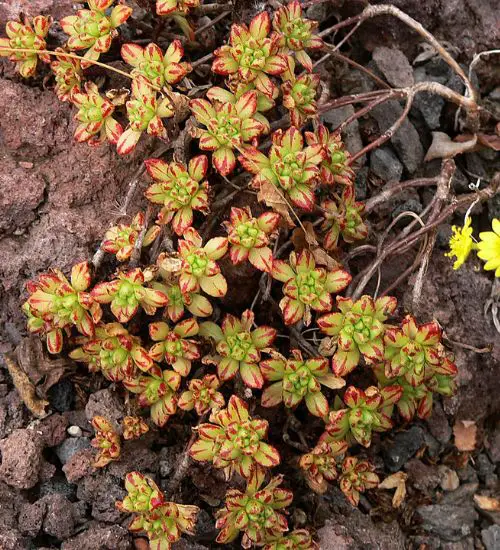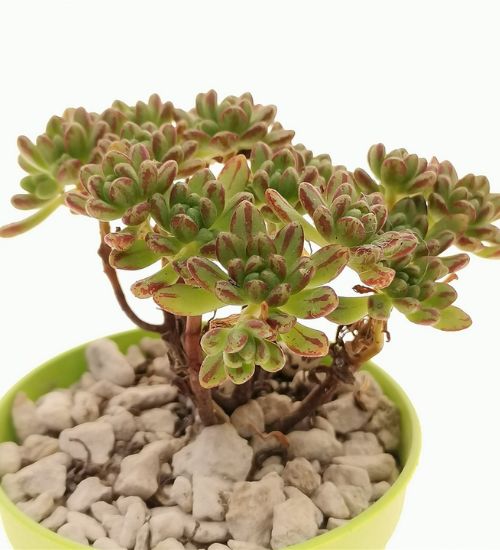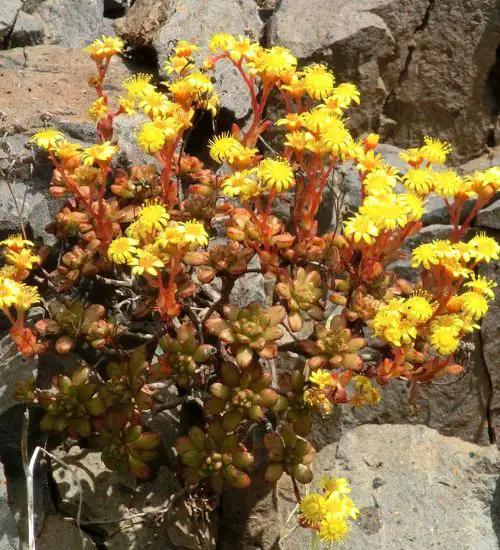Sun: Full sun to partial sun
Water: Typical water needs for a succulent
Temperature: Zone 10a from 30° F to 35° F (-1.1 ° C to 1.7° C)
Winter Survival: Winter hardy
Propagation: cuttings, seeds
Flower: In the Spring
Flower Type:
Toxic: Generally non-toxic to humans and animals
Dormant: summer
Space Requirement: Indoors & Outdoors
Common Problems: Plants may rot if overwatered, pests
Where to buy Aeonium sedifolium?
Basc Care for Aeonium sedifolium
Watering
What you need to remember is that this type of succulents needs to be watered for every 2 weeks
One simple tip for you is that you can use some online apps to check the soil status before you go water your succulents. I would recommend the ThePlantsCheck app, it has some nice features there.
Fertilizing
Only feed this succulent during its active growing seasons which means winter. Use the right fertilizer applied in the right amounts. Applying half-strength balanced fertilizer every month or so is recommended for optimal results.
Do not fertilize during summer as the plant is dormant.
Sun & Location Requirements for "Dwarf Aeonium"
Aeonium sedifolium loves the sun! To ensure your succulent is getting enough light, place it in a bright spot that receives direct sunlight for at least 6 hours each day. If you live in a cooler climate, consider bringing your succulent outside during the summer months.
Aeonium sedifolium is an incredibly resilient winter hardy plant that can survive in freeze conditions. Its thick leaves and stems, deep-rooted roots, and ability to store water all contribute to its ability to stay alive even in the coldest of winters. The roots reach deeper into the soil than most other succulents, allowing them to absorb moisture when the air is dry and cold.
Any succulents in the group will need a medium space to grow. You can place your pot at your table or window. Since this plant needs more space than mini succulents, you should consider do not plant them together with other succulents/plants.
Propagation
One way to propagate Aeonium sedifolium is by cutting
Propagating Aeonium sedifolium from seeds is a great way to produce new plants without relying on cuttings or divisions. It's important to look for healthy, dark and plump seeds that are slightly sticky when touched. The soil should be pre-mixed with well-draining potting mix, before evenly sowing the seeds and pressing them into the surface. To ensure successful germination, gentle misting of the soil should be done and placed in indirect light.
Toxicity

Aeonium sedifolium is generally thought to be non-toxic for humans and animals. However, it is important to note that certain parts of the plant may contain toxins which can cause mild skin irritation if ingested or touched. For this reason, the plant should always be kept away from children and pets.
Pests and Diseases
Aeonium sedifolium can be affected common pests and diseases like most of the other succulents such as aphids and mealybugs.
If you do spot any of pest signs, you can treat your succulent using below methods.
- Aphids: quarantine, clean infected plants, soapy water.
- Mealybugs: quarantine, clean infected plants, soapy water.
Besides that, to prevent serious health issues from happening, keep your succulent in a well-ventilated area and check it regularly for any signs of pests or health problems.


